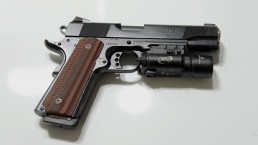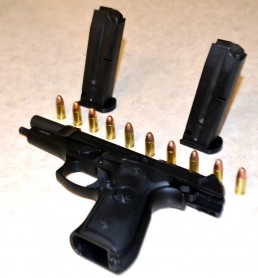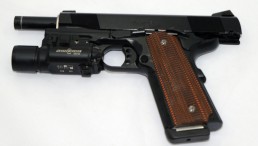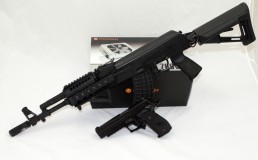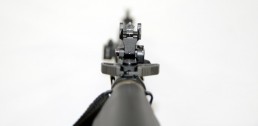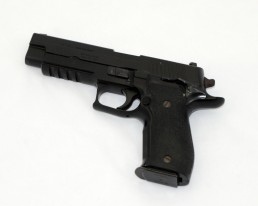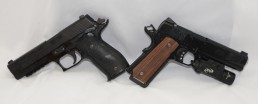notoperator
Evolve – The Next Evolution of Multiplayer?
I remember the first time I played Evolve. At Comic Con last year, I braved the cosplaying hordes and made my way over to the Manchester Grand Hyatt to check out the Xbox Lounge and play some of the exclusive game demos within. When I walked into the Lounge, my attention immediately focused in on a large poster in the corner of the ballroom; a monstrous mark in the mud eerily reminiscent of the infamous T-Rex footprint from Jurassic Park, with just the phrase “EVOLVE” displayed above. I sped my way over to the demo area where I was greeted by a friendly team of the game’s developers, Turtle Rock Studios: “Do you want to play as the Monster?” I smirked, grabbed the controller, and proceeded to mercilessly eviscerate all four of the human-controlled hunters as the Cthulhu-like creature known only as Kraken. Sadly, during the time I’ve spent playing Evolve in the Big Alpha and open beta, and due the recent controversy over the game’s downloadable content, nothing has come close to matching my excitement since that first match back at the Xbox Lounge.
Evolve pits a team of four hunters, each with their own unique skills and weapons, up against one player-controlled monster in “asymmetrical multiplayer” battles. This means that the different teams, the hunters versus the monster in this case, have vastly different abilities at their disposal.
Player Types
The hunters are comprised of four classes, Assault, Support, Trapper, and Medic, and each have four unique skills to use, including a firearm. Monsters, which also have four distinctive powers, kill and eat AI wildlife in order to gain extra armor and eventually evolve, which endows the creature with more health and increases the damage of their abilities. Evolve was flawlessly described as “an intense game of Cat and Mouse where after enough cheese, the mouse can eat the cat.” This is Evolve at its core.
Environment
When the game launches in February it will have four multiplayer modes that span twelve maps. The maps add some diversity to the gameplay by throwing environmental hazards at the players in the form of both passive and aggressive AI wildlife, carnivorous plants that will swallow hunters whole, and more. Essentially, these threats were designed to add another element for the players to worry about on top of the hunter-monster battle. However, once you have played the maps and learned what and where these hazards are, as well as how to avoid them, that element of unpredictability is completely removed from the game. This just returns the players to the basic find the monster/kill the hunters gameplay, and the environmental threats become more of an annoyance than something that adds value to the game.
Game Modes
The four multiplayer gametypes are:
- Hunt – The basic ‘hunters versus the monster’ mode
- Rescue – The hunters have to revive and escort five AI human survivors to evacuation sites before the monster can kill five survivors
- Nest – The hunters have to destroy six monster eggs spread throughout the map within ten minutes, and the monster can hatch eggs to create monster minions to fight with
- Defend – A MOBA-like mode where a fully evolved monster and waves of monster minions attempt to destroy two generators before finally attacking a ship full of survivors.
It is important to note that despite the game modes having different objectives, they can all be ended immediately if all four hunters are killed by the monster, or if the monster is killed by the hunters. From a gameplay perspective that decision makes sense, but it detracts from the value of playing modes other than Hunt, due to the fact that every other game type is basically just another Hunt match with an added objective. There has been no confirmation from Turtle Rock that they are working on new gameplay modes for Evolve, which could really hurt the replay value and cause gamers to get bored of the game quicker than anticipated.
In addition to the four modes listed above is Evacuation, Evolve’s self-proclaimed “dynamic campaign.” However, aside from an introductory trailer that scratches together the surface of a story for the game, Evacuation simply strings together the four basic game modes over five multiplayer matches called “days,” culminating in a final round of Defend. The twist to Evacuation is that the winning side of each match gets some sort of advantage for the next round. For example, if the hunters win, in the very next match there may be some auto-turrets that attack the monster, and if the monster wins, there could be a large poisonous gas cloud that damages hunters when they are close to it. According to Turtle Rock, there are over 800,000 possible scenarios created by these advantages. However, the advantages merely result in another aspect to keep an eye out for in a match, not unlike the environmental hazards mentioned earlier. Even more disappointing here is that Turtle Rock blanketed one brief trailer over the four multiplayer modes already in the game, added some more hazards on top of the preexisting ones, and decided that was good enough to comprise Evacuation’s “dynamic campaign.” Calling it so is extremely misleading to the average customer, especially if they are on the fence deciding whether or not to pick up Evolve, notice the words “dynamic campaign” written somewhere on the back of the box, and buy the game thinking it has some sort of story mode. It does not.
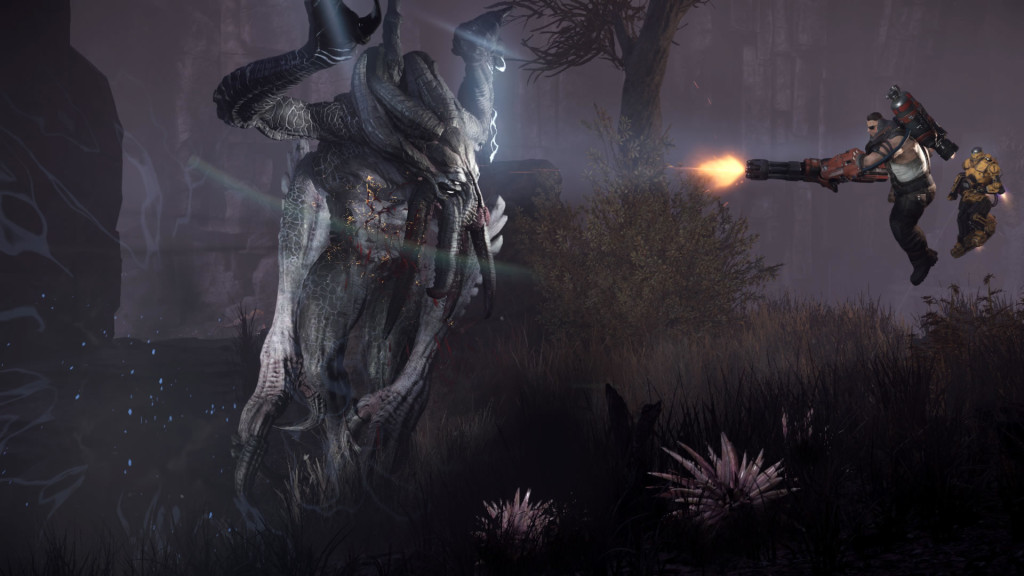
Downloadable Content
Evolve will ship with twelve maps, twelve hunters (three characters per class), and three monsters. Turtle Rock recently announced that the fourth monster, Behemoth, will be available for download in the spring for free if you pre-order the game. Conversely, if you do not pre-order Evolve and use the downloadable Behemoth code before midnight on the game’s release date, the only way to acquire Behemoth will be through a $14.99 purchase.
Additionally, if you have any interest in acquiring new hunters down that road, the Hunting Season Pass offers four new hunters and three monster skins that will set you back $24.99, but would retail at around $30 if all items within sold individually. Compare these prices to Destiny, for example, which sold its first “expansion,” The Dark Below, for $19.99. The price appeared to be pretty steep for just a handful of new story missions, a few Strikes, and one Raid, but it is quickly starting to look like a better deal compared to what’s happening with Evolve. Keep in mind, the Hunting Season Pass and Behemoth DLC only cover the first wave of downloadable characters. Any other hunters or monsters released down the road are going to cost you even more.
At this price point, Turtle Rock is effectively equating the value of one monster to a quarter of the total value of the game, and four hunters at approximately one-half. Now, I won’t pretend to understand all of the intricacies that go into creating new monsters and hunters. I am sure “it takes a lot of time, iteration and careful balancing”, and these prices are an attempt to reflect that. As a gamer who, despite what developers and publishers may think, is not made of money, it is disheartening knowing that before I even throw down the $60 to buy the game, there are all of these new hunters and monsters on the horizon. Together they’re expensive enough that I would be paying more than another full priced copy of the game if I want the chance to play all of the new hunters and monsters.
For an even better deal, Evolve is selling a Digital Deluxe version, combining the regular Evolve game with the Hunting Season Pass for just $80, a whopping $5 discount when compared to buying the game and Hunting Season Pass separately. Better yet, if you have a quality gaming PC, and are a baller, you can purchase the “PC Monster Race” edition of the game for $100, which gets you: the game, the Hunting Season Pass, Behemoth, the yet to be announced fifth monster, and two more hunters. Now if all of these different DLC’s and season passes seem like a lot to keep track of for game that has yet to be released, you are not alone. When the Creative Director of your game has to come out to publicly defend the DLC strategy, you might want to start rethinking how you got to this point. But hey, at least Turtle Rock is giving away any additional maps they crank out for free!
Online Play
Despite all of these flaws, the game really shines and is genuinely fun when there is a fully coordinated team of hunters playing together against an intelligent monster. It is a beautiful sight when every class is performing their role perfectly; the Trapper has the monster imprisoned within an impenetrable dome and is keeping it pinned to the ground with harpoons, Assault is blasting away at the monster and using their temporary invulnerability shield when they start to take damage, Support is cloaking nearby teammates raining down orbital strikes, and the Medic is doing their best to keep everyone’s health up. The downside to this is that you’ll need a solid group of four friends who understand their roles and communicate with each other. At least through my experiences in the alpha and beta, the odds of playing random games with competent hunters were minimal. Hopefully this will change after the game is released, because going into a match as a hunter without any friends or a coordinated effort can get tiresome fast. Even playing as the monster against a team of hunters who have no idea what they are doing does not really yield any satisfaction when you effortlessly rip them apart.
Offline Play
Also worth mentioning is that the game will come with an offline mode where the player will be able to play the game with bots in lieu of real people. Personally, I feel that playing solely against AI opponents would take even more unpredictability out of the game, but I can also see how playing against the computer could alleviate the concerns of some casual gamers who either do not like or are having trouble competing online.
Conclusion
I want Evolve to do well, do not get me wrong. I would love nothing more than to see the game sell tons of copies, as I have faith in gamers to support new IPs with exciting ideas rather than those just rehashing the same formula in order to hit that next annual release. However, I just wish that the game would have shipped with more value to the customer to help rid the bad taste from our mouths due to the DLC strategy (which I would like to believe was pushed on Turtle Rock by their publisher, 2K Games). Evolve could easily be the recipient of a large sales boost solely from the fact that there are not any AAA multi-platform games being released in the near future other than Dying Light (depending on your definition of AAA), which comes out on January 27th, and Battlefield Hardline on March 17th. Perhaps there will be enough content and variety in the game to make it sustainable and have an active community for the foreseeable future. If so, hopefully we will get to see an Evolve 2 that has learned from the lessons of the past. Until then, happy huntin’.
Evolve stomps into stores on February 10th, on PC, PS4, and Xbox One.
Halo 5: Guardians Beta - A Look At What's To Come
Developer 343 Industries is coming off, let’s face it, an abysmal launch of Halo: The Master Chief Collection for the Xbox One that still experiences matchmaking issues to date. 343 is aiming to use the Halo 5: Guardians Multiplayer Beta to be just that, a beta in an effort to prepare for retail launch and avoid repeating the mistakes made with Halo: MCC. With plenty of time to go before Halo 5 is released to the masses later this year and consumes the lives of Xbox gamers (no official word on a release date yet, but it will most likely be announced at this year’s E3), the data and player feedback gathered from the beta actually has a chance to be utilized by 343 and make its way into the final product. This is in direct contrast to most other console betas, which serve more of a marketing purpose as a glorified demo than as a way to actually improve the game before launch (anyone still remember Titanfall?).
Also, as a point of note: while the beta runs at 720p and 60 FPS, this has been confirmed by 343 to not be final resolution Halo 5 will run at.
Abilities
The Halo 5: Guardians Multiplayer Beta, only accessible to those who have a copy of the Master Chief Collection, runs from December 29th to January 18th and concentrates exclusively on “arena” style multiplayer matches. For the uninitiated, this translates to two teams of four Spartans battling it out in a variety of small-scale maps that cater to fast-paced combat, which is enhanced by perhaps the biggest change in the series – Spartan abilities. Not to be confused with the controversial loadouts and armor abilities from Halo Reach and Halo 4, all Spartan abilities are innately available to all players to use as they please in order to add an additional strategic dimension to the Halo gunfighting experience. In Halo 5, your Spartan now has the following abilities:
- Smart Scope – An enhanced aim feature applicable to every gun in the game. For example, Smart Scoping with the Assault Rifle zooms in and two snazzy looking semi-circles pop up on your HUD, whereas doing it with the SMG allows you to aim down the weapon’s sights. Note that doing this will improve the spread of bullets fired from your guns, as tested in the video below. Also, using Smart Scope while in the air will cause your Spartan to hover in place for a short period of time.
- Sprint – Hitting the sprint button allows your Spartan to run for an unlimited duration, though your shields will not recharge until you stop sprinting.
- Slide – Crouching while sprinting will send you into a low slide, which I’ve only ever seen one other Spartan do in all of my time playing the beta so far. Maybe players will get more use out of it once we get a shotgun to slide around with?
- Thruster Pack – A quick press of the Thruster Pack button gives your Spartan a short range dash that can be used going forward, backward, left, right, and even mid-air, but has about a four second delay before it can be used again. Try boosting left or right during one-on-one firefights to throw off your opponent’s aim, or use it to dash to safety without having to sprint so your shields can recharge sooner.
- Clamber – Pretty simple concept here, but new nonetheless to the Halo series. Pressing the Clamber button allows for your Spartan to climb up ledges that are within reach. Clambering, in conjunction with sprinting and the Thruster Pack, can have you zipping around the map in no time.
- Spartan Charge – After sprinting for a short period of time, your target reticle will change from the usual circle in the middle of your screen to two brackets. Once this happens, a press of the melee button causes your Spartan to perform a flying knee into anyone foolish enough to get in the way. One hit on an enemy from behind with a Spartan Charge will result in their immediate death, though a charge from the front or side will only remove your opponent’s shields, assuming they have taken no previous damage.
- Ground Pound – Seemingly the most gimmicky ability in game, the Ground Pound is actually a pretty useful tactic once you’ve mastered it. A direct hit on an unsuspecting foe will nab you a kill, whereas anything else will only take down their shields and leave you exposed (again, assuming no previous damage taken). Try baiting unsuspecting enemies into your location when you have the high ground, jump up, hold down the Ground Pound button, and teach that other Spartan what it feels like to be a Goomba under the boot of a certain mustachioed Italian plumber.
Also new in Halo 5 is Spartan chatter, in-game dialogue that your Spartan teammates make, which helps to facilitate communication that might not otherwise be present if one your teammates isn’t mic’d up. Hearing warnings of enemy snipers, for example, is a nice touch that definitely saved me in the beta. The possibility of being able to customize voices would be a fun feature in the final game, and was a welcome touch in Halo Reach’s version of Firefight. However, this may just be me being blinded by my desire to have Sergeant Johnson in the game.
Weapons
On the weapons front, the fan favorite Battle Rifle returns, in addition to the other popular Halo mainstays like the DMR, Pistol, and Sniper Rifle. A new gun we got to mess around with in the beta, appropriately called the “Hydra”, is a multi-shot rocket launcher that locks onto enemy Spartans and takes two direct hits to get a kill. Where things to start to get interesting is with the addition of the new “legendary” weapons. On the multiplayer map Truth, affectional dubbed “Midship 2.0” by 343, you’ll find an Energy Sword called the “Prophet’s Bane”. Aside from having a badass name and yellowish hue, the Prophet’s Bane actually increases the movement speed of its Spartan host, allowing the wielder to hunt down enemies with swift precision. My prediction is that these weapons are going to be the next evolution of Halo power-ups like Overshield and Active Camoflage. Personally, one of the most exciting aspect of these legendary weapons for now is speculating what others we’ll have in our arsenal in the final game. I’ve had a couple ideas for guns that could show up in the final game: maybe a shotgun that gives the player an overshield called “The Chief”? Or how about “Wetwork”, an SMG that grants active camouflage? Only time will tell, but for now, post in the comments below or tweet at us @NotOperating with your own legendary weapon ideas!
Game Modes
Slayer, Halo’s equivalent of Team Deathmatch, makes its return in Halo 5, in addition to two brand new modes: Breakout and Strongholds.
Breakout, set in the Speedball-like maps Trench and Crossfire, is a round based game where each player has no shields and no motion tracker. The player also starts with an SMG, pistol, one grenade, and most importantly, one life. The team with the last Spartan standing at the end of the round wins, and the first team to win five rounds wins the match. Having no shields causes you to change strategy from typical Slayer encounters to what oftentimes results in you getting one-shotted by a grenade from across the map or picked off by one of the Battle Rifles up for grabs for each team. However, if you manage to survive the initial ‘nade salvo, or make it to a safe spot before the BRs are up on their perches, Breakout provide some fun, yet stressful gameplay, especially when you are the lone Spartan against a few survivors on the enemy team.
Strongholds, a variant on the Territories mode of yore (similar to Domination in Call of Duty), has Spartans fighting over three control points. Concurrently holding two of these capture sites will allow your team to start racking up points every second. Having only one stronghold means your team won’t be getting any points at all. First team to 100 points wins the game.
As for the new ranking system in these modes, completing ten matches will place you in one of seven tiers, similar to Starcraft II’s ladder system (which isn’t surprising, considering Josh Menke helped design both systems). The tiers, in ascending order, are: Iron, Bronze, Silver, Gold, Onyx, Semi-Pro, and Pro. No need to be disappointed if you feel your placement isn’t representative of your actual skill level. Winning matches after those initial 10 will slowly but surely move you up to the next rank. Conversely, losing will drop your level down. While I can’t complain about being able to brag to my friends that I am a Pro in Strongholds or a Semi-Pro in Slayer, a little more transparency from 343 Industries as to what factors determine the initial ranking would be a welcome addition.
For some, 2014 will live in infamy as the year game developers got away with selling unfinished games. While making it up to early game adopters with special perks like a free Ubisoft game or a remastered ODST is great and all, hopefully in the future we will see finished products released, you know, when they are actually finished. As expected, the beta was not without its share of bugs and matchmaking issues. However, with the Halo 5: Guardians Multiplayer Beta, 343 Industries is taking a step in the right direction. Somehow, despite all of these changes, the game still manages to have that beloved classic Halo feel. Now, if you’ll excuse me, I need a weapon.
Steam Machines to Officially Launch in 2015
Valve has been talking about their Steam OS platform since 2013, we discussed it at length here. At CES 2014, it was the talk of the town, with many OEMs promising to release Steam Machines (defined as gaming PCs designed for living room use running Steam OS and utilizing the as yet unreleased Steam Controller) within the coming months after CES.
Later in 2014, it turned out that Valve had not yet finalized its controller design nor had it finished the Steam OS; as of the time of this writing, Steam OS is still in beta. Many system builders opted to release their systems as regular gaming PCs designed for living room use, and they opted to run Windows and include Steam with Big Picture mode enabled, along with a bundled Xbox 360 controller.
However, despite silence from Valve over the recent months, it has been confirmed by multiple sources that Steam Machines will have an official launch at GDC (the Game Developers Conference) in early March of 2015. The Steam Controller design has been finalized, and Steam OS is apparently ready to come out of beta. Multiple PC boutique builders are already ready to launch a variety of products designed from the ground up as Steam Machines.
What this means for Microsoft is that they'll have some new competition to face when Windows 10 comes out later this year. Valve is working quickly to bring games to Linux systems such as Steam OS, and PC builders might opt to go for Steam OS for gaming focused PCs in order to save money by not having to purchase a Windows license.
This is also an issue for Microsoft on the hardware front, as many of the Steam Machines will aim for a $500 price point, designed to compete with the Sony PS4 and Microsoft Xbox One.
Whether Valve will be successful in pushing Steam Machines is yet to be determined, but while everyone expected 2014 to be the year of Steam Machines and Steam OS, it obviously didn't happen, but 2015 is now confirmed.
We don't have any details yet on the finalized Steam Controller design, but we'll update this article as soon as we do (although it might unfortunately not be until official release at GDC).
Buyer's Guide to the 1911
Welcome to our buyer's guide to the 1911. If you're not interested in a long winded in-depth guide and just want an immediate and basic recommendation, buy an $650-$1200 pistol chambered in .45 ACP with a Government length (5”) barrel from Springfield Armory, Colt, Smith & Wesson, SIG Sauer, Ruger, or Remington. The decision between each of those models and manufacturers will come down to price and preference.
History
For the uninitiated, the M1911 pistol has been in continuous service with the United States Armed Forces since the year 1911 (hence the name), when it beat out the Luger pistol chambered in 9x19mm Parabellum for the initial contract. It has provided over one hundred years of continuous service internationally to date, and by the looks of things, it will continue to do so for some time. The important names which you’ll hear talked about surrounding this particular pistol are John Moses Browning and Samuel Colt, two industry legends.
Both the design and designer of the 1911 have a well-deserved reputation, with John Browning having been granted 128 firearms patents in his lifetime. Arguably, the 1911 was and still is his largest success in the firearms industry. Although, a number of his other designs such as the Hi-Power (GP35), M1919 machine gun, and the M1917 machine gun will hit their centennials relatively soon and are also well regarded firearms.
On the other hand, Samuel Colt, of the famous quote “God made man, but Sam Colt made them equal.” was actually quite dead by the time the M1911 was designed, having passed away in 1862, when John Browning was 7 years old. Instead, the credit for the fame of the “Colt 45” goes to his company, which was awarded government contracts for the production of a number of different firearms over the course of US history, including a new order as of July 2012 for more of the M1911 pistols.
The M1911 design has seen both World Wars, the Korean War, the Vietnam War, the Gulf War, the current conflicts in Afghanistan and Iraq, and a myriad of other battles locally and abroad. It’s no wonder that anyone would be interested in having their own piece of history, making the M1911 a very popular pistol. For the average consumer, choosing a 1911s is a fairly large quandary, with almost every company producing their own flavor of the classic pistol, with a variety of options and customizations, each of which may suit some people better than others.
Before continuing, as a point of note, when I refer to the platform as the 'M1911' or simply the '1911', what I truly mean is the M1911A1 and its modern derivatives. The original M1911 was modified with some small external changes in 1924 and was designated the M1911A1, although the longer title has never really entered common colloquialism.
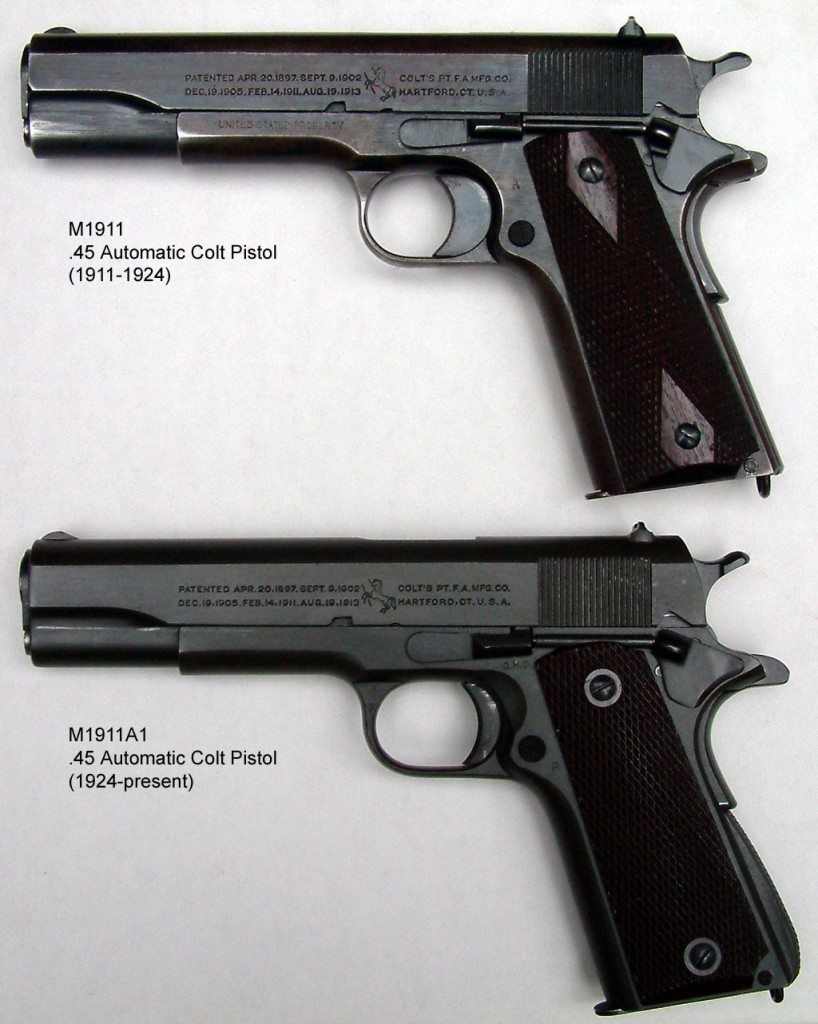
What To Expect
When opting for a 1911, you’re buying a 100 year old design. This does not mean the design itself is irrelevant or bad, merely that it will take a certain approach and recognition of inherent flaws in the design when it comes to maximizing the utility of the weapon.
Caliber Introduction
The modern 1911 platform comes in a variety of calibers, ranging from the standard ‘Big Three’ to more specialized calibers that have not been widely adopted and probably require a reloading setup to take advantage of. In this section I’ll be summarizing both the popular cartridges available for the design as well as some of the newer, boutique ones for more niche purposes. All magazine comments are geared toward people buying the single stack 1911 models, since the various double stack models have their own quirks and differences.
- .22LR (Long Rifle): A very handy training cartridge, this round is widespread and generally fairly cheap to acquire. There are 1911s chambered in .22LR as well as .22LR conversion kits for 1911s that modify the barrel and internal parts to account for the lower pressure and operating force of this cartridge. There are also .22LR pistols designed to look like a 1911 on the outside, but have even more significant differences in the internal workings and will operate differently than a 1911 chambered in .22LR.
- .45ACP: The cartridge the 1911 was originally designed for, this venerable round has been in service since the introduction of the handgun more than a century ago. Ballistics-wise, this cartridge is big and relatively slow. However, the in-depth discussion of it in relation to the rest of the ‘Big Three’ is a discussion for another day, though for a short introduction, you can check out our discussion of the ‘Big Three’ in our ZAUF series. In terms of magazine capacity, the original standard was seven rounds, with more modern standards set at 8, or if one is willing to use an extended magazine, 10. Of note, however, is that in a traditional 1911 chambered in .45 ACP, constant chambering and rechambering of the same round will result in bullet setback - when the bullet itself is pushed deeper into the brass from where it was originally seated. Cartridges suffering from bullet setback are dangerous to fire and should be removed from use.
- .45 Super: A cartridge design based off of the .45 ACP, .45 Super has the same external measurements, but with thicker walled brass that is loaded to higher pressure specifications, making it a more powerful round. Some, but not all, 1911s that are chambered in .45 ACP are also rated for .45 Super firing. It is up to the owner to check with the individual manufacturers to see if their 1911 is rated to handle .45 Super.
- 9x19mm Luger/Parabellum: With the rise in popularity of the cartridge itself as well as the adaptation of the M1911’s design, the 9mm cartridge works well on the platform and has been adopted in wider use by competition shooters and people looking to shoot a different caliber out of the 1911 platform. Magazine capacity for a standard 9mm model is about 10 rounds in a flush fit magazine, and more for extended magazines. In the author’s opinion, if you want a 9mm pistol and a Browning design, buy a Hi Power.
- .38 Super: A popular competition cartridge that traces its roots back to a drawing board in Colt’s factory, this cartridge is actually surprisingly powerful for the amount of attention it doesn’t receive. Ballistically, when using the right loads this cartridge overpowers 9mm Luger and can give .357 SIG a run for its money. If you’re buying a gun in this cartridge, you probably don’t need me to tell you how great it is. Good luck in IPSC.
- .357 SIG: This caliber is great - a solution to a problem that may or may not have existed - and has been adopted by a number of agencies including the Secret Service. However (and this is a rather large ‘however’), I do not believe the .357 SIG has any place in serious use with an M1911. With the .40 casing, this caliber only offers an absolutely minimal magazine capacity increase when compared to .45 ACP. It can also present issues caused by the necked casing. In short, if you want a gun in .357 SIG, the 1911 is not the best option.
- .40 S&W: A fairly popular cartridge used by law enforcement after the FBI decided 10mm was too powerful for them, this cartridge has a reputation of being a legitimate compromise between 9mm and .45ACP while also being Short(er) and Weak(er) than its 10mm parent cartridge (in all seriousness, the S&W stands for Smith & Wesson). From a practical standpoint, while you can buy a gun in this caliber, I never recommend it.
- 10mm: An interesting cartridge designed by Col. Jeff Cooper (who deserves a discussion in another article) in an effort to transcend the original pitfalls of the .45 ACP cartridge. This particular cartridge shoots flatter, farther, and is more powerfully than any of the ‘Big Three’ at the cost of increased recoil and in the current market, being significantly more expensive to purchase. So if you want a 1911 in 10mm, be sure you can handle the recoil, and be prepared to pay the price of ammunition.
- 7.62x25mm Tokarev: Actually a fairly rare find, there are conversion kits available for 9mm caliber M1911s that involve changing out the entire upper assembly (slide, barrel, bushings, etc.) and magazine to accept the elongated Russian ammunition. 7.62x25mm Tokarev is fast and cheap, so if the cost of ammunition is a concern, it might be worth considering.
- .400 Cor-bon: A more modern innovation focused on getting the ballistics of 10mm while still using the .45 ACP brass. This is a wildcat cartridge (meaning it is not mass produced and is not necessarily readily available) and is expensive to purchase in relation to the others on this list.
- .50 GI: A very niche wildcat round that boasts a larger diameter and improved ballistics over the .45 ACP cartridge. As of this writing, it is purely a novelty that provides the satisfaction of having a larger bullet that hits a little harder.
Grip Safety
The grip safety is the lever-like protrusion at the rear of the pistol frame that is held up against the web of the firing hand and needs to be fully depressed for the pistol to fire. In theory, under stress the grip safety will be depressed because the firing hand will have an adrenaline-fueled vice grip on the pistol and won't be an issue that requires discussion. However, after over 100 years of observation, there have been a number of incidents in which someone with a hand wound was unable to make the handgun function under stress due to being unable to deactivate the grip safety. Many consider this particular pitfall of the design to be one of the major downsides of the 1911 platform.
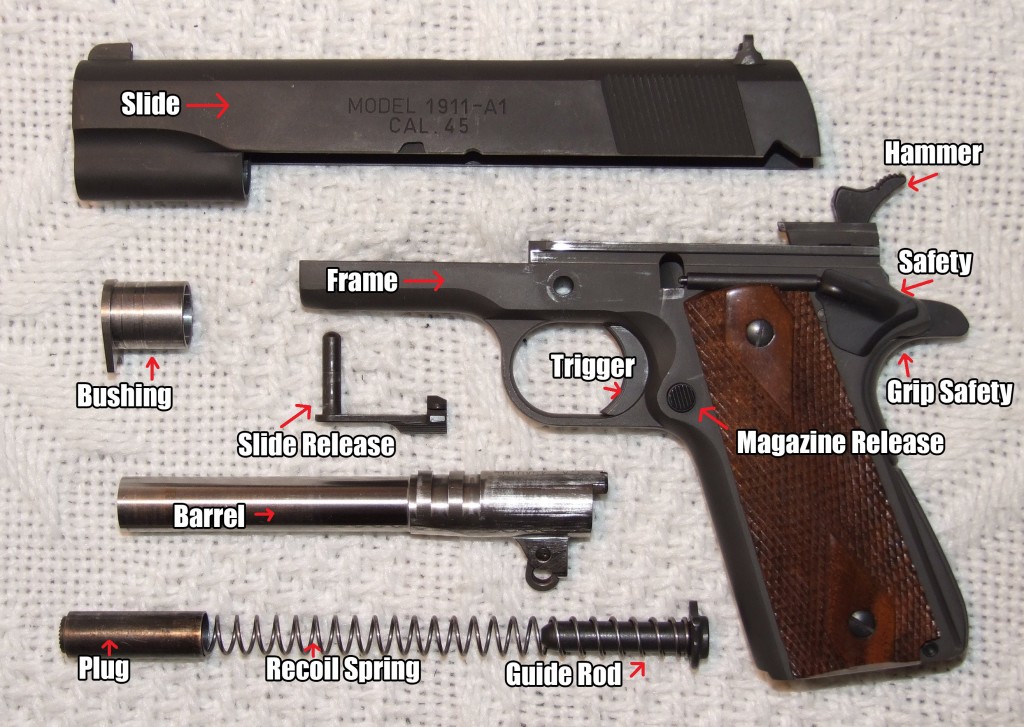
It is of my opinion that the 1911 design is the only one that can get away with having a grip safety since modern handguns that lack the sliding trigger or the particular safety/sear combination of the original design have no reason to even consider it (looking at you, HS2000/Springfield XD.) Furthermore, the original design of the pistol lacks a firing pin safety of any sort, leaving the grip safety and manual safety as the only 'safety' features on the firearm. The 1911 is a single action handgun, meant to be carried 'cocked and locked', meaning that the hammer is locked back and there is a round in the chamber.
The grip safety, the manual safety, and not pulling the trigger are the triad of conditions preventing the firearm from being negligently discharged. As a worst case scenario, if the manual safety lever is deactivated, the grip safety and absence of trigger pull are still there to prevent the gun from firing. Removing the grip safety from the single action only design only increases liability and potential hazard of misuse.
The single action only configuration is the confounding factor, with even some of the more poorly made 1911s having a relatively light and short trigger pull. That tradeoff is made for exactly those reasons, without the longer and heavier trigger characteristics of a modern design, the individual operator is able to shoot the pistol more precisely and consistently than its competitors.
Controls
As stated above, the original design of the 1911 comes with a manual safety lever that must be flipped down to fire the weapon. This safety lever interacts with the sear and hammer assembly to physically prevent the movement of the trigger to the rear as well as preventing the hammer from falling onto the firing pin. The original design of the lever is rather small and many modern designs have improved upon it with extended safety levers as well as adding the option to also have a lever on the right side of the pistol to make the weapon suitable for ambidextrous use. As a personal recommendation, unless you want a true to life replica of the older designs, the extended safeties are worth every additional penny.
Barrel
The M1911 bears a slightly different terminology when it comes to the size of the frame and length of the barrel between different models. It is understood if you refer to the different sizes by their more universal terms such as 'Full size', 'Compact', and 'Subcompact', but the specific vocabulary for the M1911 is as follows:
- Long Slide: Generally a barrel 6 inches or longer with a full sized frame, these are aptly named because these particular models generally have a custom made slide to cover the additional barrel length. This particular barrel length is significantly more common in competition circles and Arnold Schwarzenegger movies.
- Government: A 5 inch barrel, generally considered the 'full size' version of the 1911. This particular length is the one that was adopted for widespread service by the US Government and bears that title.
- Commander: A barrel about 4 inches long with shortened frame to match, this length is considered the 'compact' size of the M1911.
- Officer: The smallest of the lot, referring to a barrel approximately 3.5 inches long with an even more abbreviated frame. This length is considered the 'subcompact' size.
Trigger
The M1911 operates with a fairly unique trigger system uncommon in modern designs. Unlike other pistol designs, the trigger of the 1911 slides into the frame instead of hinging on a single point like a lever. This translates to a smoother, more consistently rearward trigger pull for the end user. This more 'luxurious' trigger pull benefits everyone from the most basic paper puncher all the way up to professional shooting competitors with highly tuned raceguns, which continues to drive the popularity of the platform.
Furthermore, the actual face of the trigger itself comes with various textures and geometry. The original design geometry of the trigger is slightly curved in a half moon shape, but modern innovations have different trigger geometries ranging from differently angled curves all the way to straight, flat triggers. The face of the trigger itself also ranges anywhere from smooth to serrated in various granular densities meant to give the shooter better tactile detail and control of the trigger pull.
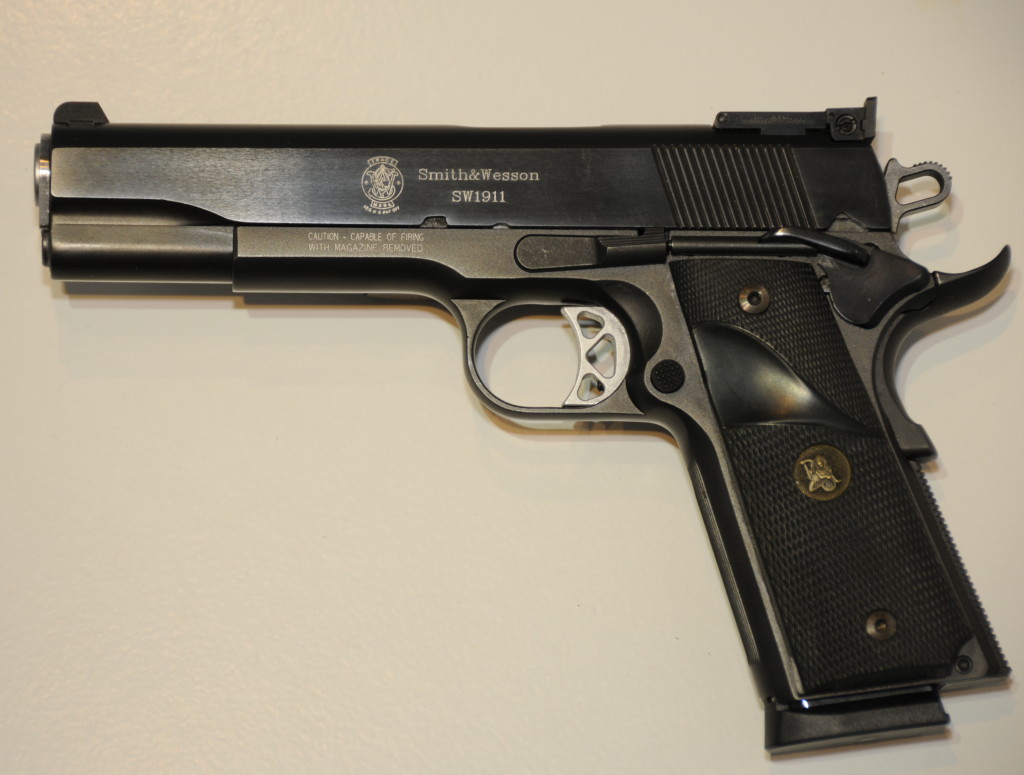
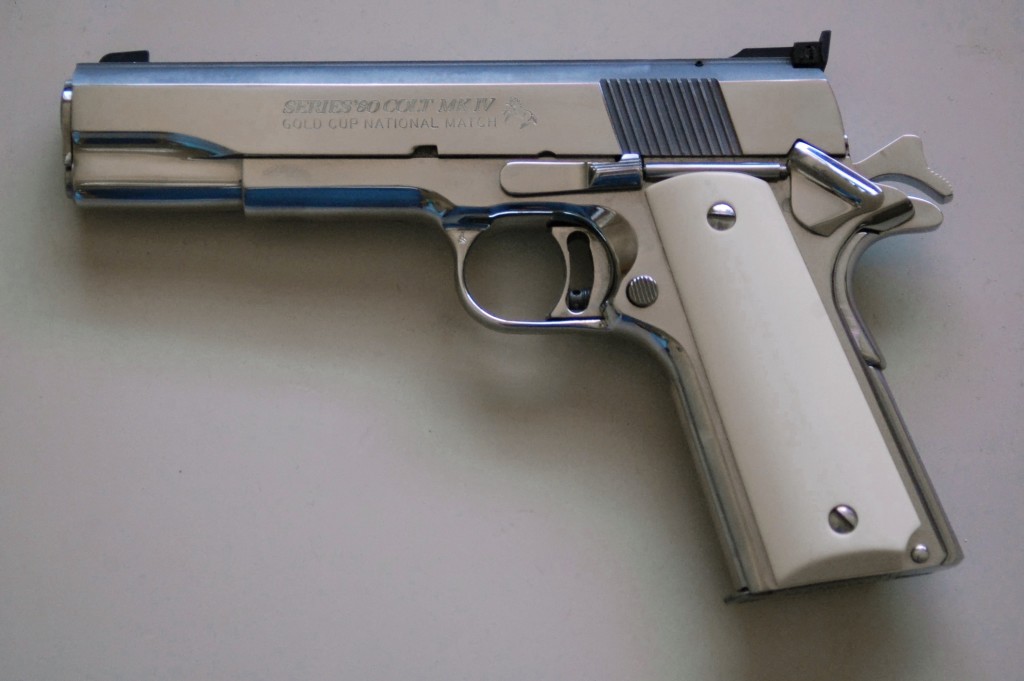
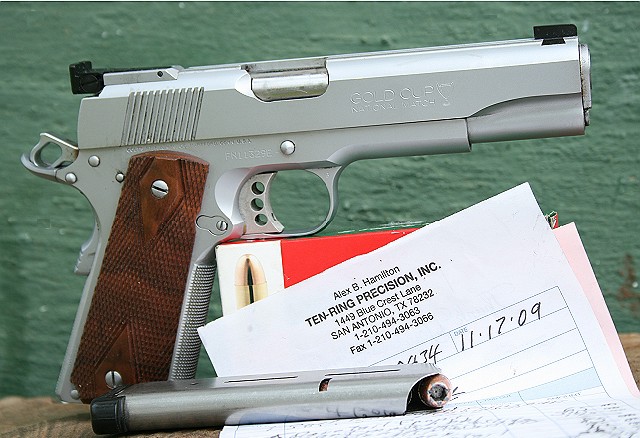
Single Stack Magazine
The original design of the 1911 comes with a single stack magazine. (For more on magazines, see our Zen and the Art of Understanding Firearms series here.) Additionally, the original design of the magazine had feed lips optimized for the 230 grain FMJ ball ammunition that was prevalent during the time period. (For a very detailed discussion on 1911 magazines, click here).
Modern 1911 magazine feed lips come in 3 broad categories: GI, Hybrid, and Wadcutter.
- GI spec magazine feed lips are designed solely for feeding FMJ ball ammunition (for more on bullet types, check out our ZAUF article here). The lips themselves are long and tapered toward the rear, maintaining full control of the cartridge through the entire firing and feeding cycle. This particular magazine type is actually fairly rare to find aftermarket and generally will only come in the 7 round capacity.
- Hybrid spec magazine feed lips allow the cartridge to spring free of the magazine's control earlier in the feeding cycle for the purpose of improving reliability in feeding non-hardball ammunition such as hollowpoints and wadcutters. The lips themselves are generally shorter while preserving the taper of their GI derivations.
- Wadcutter spec magazine feed lips are short and parallel, designed specifically for the wadcutter problem. Testing by the source cited above has shown that these short, parallel feed lips are a way to avoid double feeds when using rounds with a shorter overall length by way of preserving the intended feeding angle coming up out of the magazine.
Internal and External Extractors
A modern issue with the 1911 platform is the current implementation of various extractors. The original design of the 1911 stipulates an internal extractor and many purists will defend that decision to the death. However, opting for an internal extractor in a modern production pistol will entail a higher price tag due to the additional cost of fitting and finishing required to properly tune an internal extractor.
For anyone with any experience with modern handguns, an external extractor is par for the course: accessible visually from the outside of the pistol, in the production of a given firearm an external extractor is much easier to deal with and doesn't add any unforeseen costs to the production of the pistol. As it is with everything, mileage varied throughout some production models with various shifts in quality and reliability throughout the years, but modern production 1911s with external extractors will generally be reliable in their function.
Full Length Guide Rod
Referring once again to the original design of the 1911, the design required only a short rod tensioned with the mainspring against the recoil spring plug. A trend in modern 1911s has been to eschew that for an 'improved' design involving a two-piece full length guide rod that requires a tool (usually a hex wrench of some variety) to remove it from the frame. What many manufacturers will promise from this change in design is an inherent increase in accuracy for the weapon. From personal experience and the majority of anecdotes available for public perusal, there is no real evidence to support that statement beyond marketing hype. As a rule, I do not recommend opting for a full length guide rod in a 1911 purchase because it will only add unnecessary complexity without any added function.
Barrel Bushings
The 1911 is fairly unique in the field of modern production handguns due to the fact that it uses a removable barrel bushing. The barrel bushing is the piece at the front of the slide that surrounds the barrel, keeping it in place during the operation of the weapon as well as providing the cap which holds in the recoil spring and plug.
A few modernized designs will instead utilize a bull barrel (which is thicker than a standard barrel) that eliminates the need for the barrel bushing but requires the full length guide rod described above.
Aside from aesthetic reasons, the only reason to acquire these particular types of modernized designs is for competition purposes, and if you’re building a racegun you probably already know what you want out of your pistol and this guide is probably too basic for your needs.
Series 70 vs Series 80 1911s and the Firing Pin Block
The original design of the 1911 did not incorporate a firing pin block. For the uninitiated, a firing pin block is a safety system that prevents the firing pin from accidentally activating on anything short of having the trigger pulled, usually at the cost of changing the actual feel of the trigger pull itself.
The colloquialism used in the subsection involves the Colt manufacturing series of 1911s, the Series 70 models being made in the original style without the firing pin block and the Series 80 being made with a firing pin block.
As with most colloquialisms, this is not an entirely accurate description of the true difference between the 70 and 80 Series of guns, but in common parlance the lack or presence of the firing pin block is enough to cover the topic conversationally. For a more in depth discussion of this topic click here
As far as the practical concerns of the firing pin block, there will be a difference in the feel of the trigger pull when there is a firing pin block present. Usually this difference is described as being heavier and grittier, getting in the way of target trigger performance. However, if you’re willing to spend the money to get a trigger job done by a good gunsmith, the presence of the firing pin block will be a non-issue. However, the firing pin block is not required by the design in order for the firearm to be considered safe, as the existing safeties and mechanics of the gun are enough to prevent an accidental discharge. The firing pin block adds another layer of safety that the individual can opt for if they like.
Controlled Feed Principle
Simply put in this write-up the cartridge must remain in full control of the pistol from the time the magazine is locked in place to when the spent casing clears the ejection port. Once again referring to the original design of the M1911 platform, with GI spec magazines and the full metal jacket ammunition that the pistol was designed to use, this principle is held true through the entire loading/firing/ejection/feeding cycles.
Modern improvements and changes simply add another (or multiple other) dimension of issues to consider during the microseconds of ejecting, feeding, and chambering. The trend away from the GI spec magazine lips takes away from the full control of the cartridge during the feeding cycle in favor of entrusting proper chambering to the forward momentum of the new cartridge rather than pressure applied during the feeding cycle.
Commercial Production
For general consumer purposes, the available firearms on the market can be separated into five broad tiers based almost entirely on cost:
- Budget: This tier is dominated by the Philippine import companies such as Rock Island Armory and American Tactical Imports. The price range starts relatively low and is capped at about $600. Many of these companies are able to provide a decent product that may have more modernized amenities and features than their higher priced counter parts by taking advantage their location and labor costs to lower their prices.
- Basic Commercial Production: This tier of production involves many commercial brands that lack the higher end features and hand fitting of their premium counterparts, but generally tend to be made in the US and come with quality guarantees as well as the custom shop capability to back their promises up. The general price range involved in this tier is anywhere from $600-$850
- Premium Production: The luxury tiers of the commercial brands, these pistols are made from the same production parts as their basic brethren but spend a brief period in each company’s custom shop for some hand fitting and finishing. The general price range of this tier will run from $850-$1200.
- Semi-Custom: Generally a very high end tier of pistol that has the option of being made to order and begin their lives entirely in the care of the company’s custom shop, these pistols receive extra care and quality control from beginning to end of their production cycle. The price range on these pistols will run generally from $1500-$3000
- Custom: At this tier, you’re no longer dealing with commercial production, but instead generally with small custom shops and individual gunsmiths. These pistols are made to order to individual specifications and requirements and exist in a tier generally from $3000+.
Building a 1911
Some people will want to take on the project of building a 1911 from ‘scratch’, or hand fitting together parts from a premade slide, receiver, and barrel kit. I cannot express how strongly I advise against this particular course of action if you have no previous machining experience. While relatively simple in theory, there is a reason why gunsmithing is considered a professional trade that requires specialized tools. For a vast majority of people, the endeavor will be filled with nothing but pain and frustration.
However, if you are completely insistent on building a 1911 from a parts kit for yourself, read this as a way of familiarizing yourself with the process from start to finish.
The Round-Up
To reiterate the point, if after reading this guide and doing your own additional research you’re still unsure as to what to get, buy a $650-$1200 pistol chambered in .45 ACP with a Government length (5”) barrel from Springfield Armory, Colt, Smith & Wesson, SIG Sauer, Ruger, or Remington. A decent pistol from a major brand will minimize the frustration and hassles of the platform while maximizing the shooting experience.
The 1911 platform is second only to the AR-15 in modern firearms in terms of the amount of variety and options available for purchasing and customization. For the average consumer, this can present a mind boggling set of choices that may not always make sense. Hopefully this guide has helped to clarify the features and choices available.
ZAUF: The Big Three
Since we’ve covered the basic types of bullets, the next logical step would be to discuss the ‘Big Three’ of handgun cartridges.
The ‘Big Three’, as they’re colloquially known, are 9mm Luger (9×19mm Parabellum), .40 S&W (Smith & Wesson), and .45 ACP. Since this is part of our ZAUF series, we won’t go too in depth on each one, but rather cover the basics of each of them.
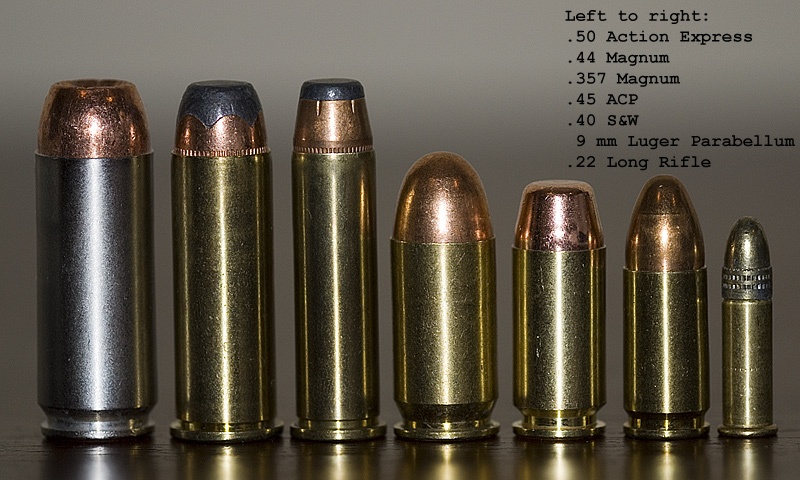
9mm
9mm Luger is the most popular and widespread of the three. It is the smallest round and the most common bullet masses for 9mm are 115 gr, 124 gr, and 147 gr. The ‘gr’ refers to ‘grain’ (so ‘124 gr’ would be spoken as “one twenty-four grain”), and is a unit of mass. 1 gram is the equivalent of approximately 14.5 grains.
9mm is also the cheapest of the three, currently priced around $0.21 per round for 124 gr FMJ.
Another benefit of 9mm is that due to being the smallest of the three, more rounds of 9mm can fit in a magazine of an approximately equivalent size compared to .40 S&W or .45 ACP. The examples we’ll use are the Glock 17 (9mm), Glock 22 (.40 S&W), and Glock 21 (.45 ACP), since they’re all almost the exact same size. The Glock 17 has a standard capacity of 17 rounds, compared to the Glock 22 and Glock 21, which have 15 and 13 rounds respectively.
From our subjective point of view, the recoil of 9mm feels light but snappy, and tends to cause the muzzle to flip up slightly. It’s easy to shoot out of a typical full sized or compact pistol, but gets a bit harder to handle out of sub-compact pistols.
.40 S&W
.40 S&W rides the line between 9mm and .45 ACP. .40 S&W was based off of the 10mm Auto round, but was made shorter and uses less powder in order to reduce the felt recoil when firing.
.40 S&W typically uses bullet masses of 155 gr, 165 gr, and 180 gr.
.40 S&W costs more than 9mm but tends to be cheaper than .45 ACP. It is currently priced around $0.25 per round for 180 gr FMJ.
As mentioned above, the Glock 22 fits 15 rounds of .40 S&W, compared to the equivalently sized Glock 17 (17 rounds) and Glock 21 (13 rounds).
Using our subjective view of recoil again, .40 S&W has the recoil characteristics of 9mm in that it’s snappy and causes muzzle rise, but it feels as though it has the heavier recoil impulse of .45 ACP. This makes it our least favorite of the ‘Big Three’. While it walks the middle on price and size, it feels as though it takes the worst of both worlds (of 9mm and .45 ACP) when it comes to recoil.
.45 ACP
Finally, the venerable .45 ACP was developed by John Browning in 1904, and is most closely associated with M1911 pistol. Most .45 ACP uses bullet masses of 180 gr, 200 gr, and 230 gr.
.45 ACP is the most expensive of the three cartridges, currently selling for approximately $0.32 per round for 230 gr FMJ.
One of the main complaints of .45 ACP is that due to its girth, less rounds can be fit in a magazine. As in our example of the Glock 17, 22, and 21, the Glock 21 chambered in .45 ACP holds only 13 rounds, as opposed to the Glock 17 and 22, which hold 17 and 15 rounds respectively.
Going back to our subjective recoil analysis, .45 ACP clearly has the highest recoil impulse. However, the recoil characteristics make it feel as if the gun is pushing back towards the shooter rather than flipping the muzzle up. This makes the recoil easy to control which allows for rapid reacquisition of the target. Despite the heavy recoil impulse, the characteristics of the recoil actually make it one of our favorite calibers to shoot.
ZAUF: Introduction to Bullet Types
Let’s get back to bullets. There are many different kinds of bullets available on the market today as well as a wide variety of cartridges which utilize these bullets. The anatomy of a cartridge, which we glossed over earlier, consists of 4 major components: the casing, the bullet, the gunpowder, and the primer.
Bullets come in a wide variety of shapes and sizes, even within the families of specific calibers. For our introduction, I’m going to split it into 3 very general categories: Full metal jacket, hollow point, and other - since that’ll be what you see the most in stores.
Full Metal Jacket (FMJ), as the name implies, means that the bullet (normally cast from lead [Pb]) is coated in a jacket (most commonly copper [Cu]) that leaves the base of the bullet exposed. For the most part FMJ bullets are the most common bullet types you’ll encounter on the market.
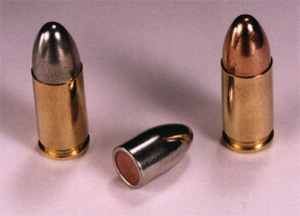
Jacketed Hollow Point (JHP) bullets are true to their name, with a hollow cavity in the nose of the bullet that exposes the lead core and allows the projectile to expand on impact, increasing the terminal damage of the projectile through soft targets. The downside of this is that against even lightly armored targets, the expansion reduces the overall effectiveness of this ammunition type.
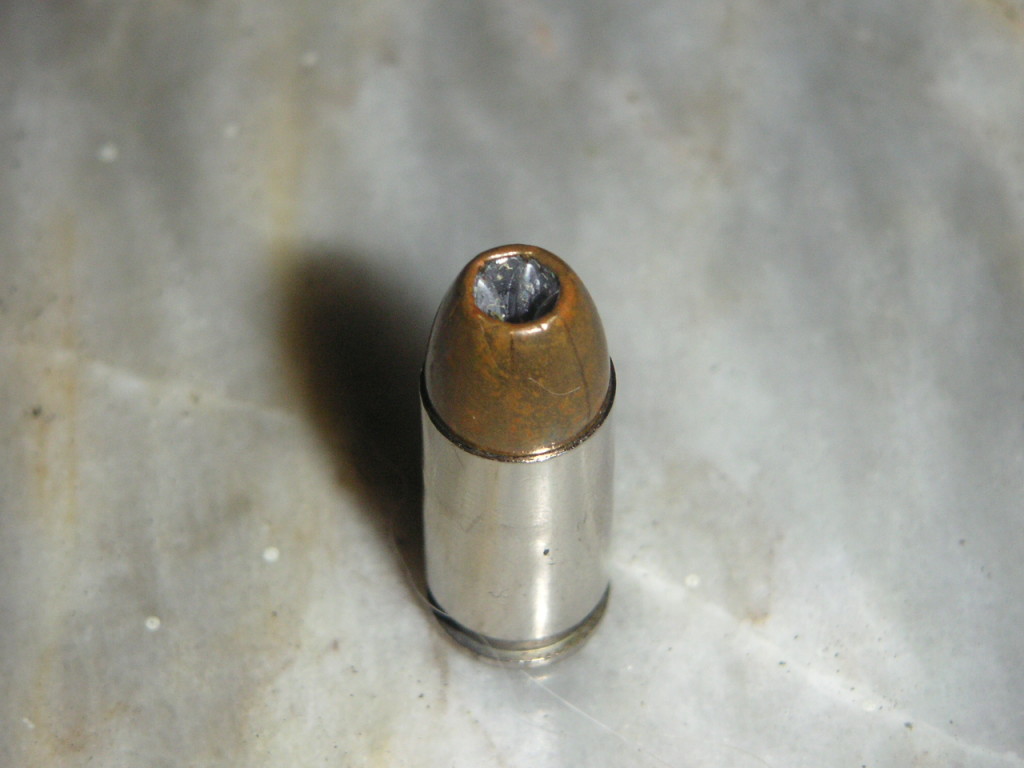
The ‘Other’ category of ammunition covers everything from non-jacketed ammunition to extremely specialized ammunition such as Glaser Safety Slugs and snake shot (also known as rat shot). Almost all non-jacketed ammunition will lack the copper jacket the previous two categories sport and can come in a variety of shapes and purposes. For consumer purposes, these different types of specialized ammunition will become viable with experience and actual use cases.
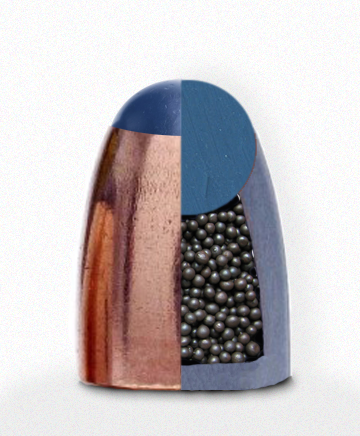
For the examples listed above, non-jacketed reloaded ammunition can be found as an alternative to regular; Glaser Safety Slugs are a special type of bullet with a core made up of loose No. 12 birdshot capped with a polymer tip to prevent over penetration; finally snake shot (or rat shot) is fairly self-explanatory, with different caliber loads meant to be viable against snakes and vermin.
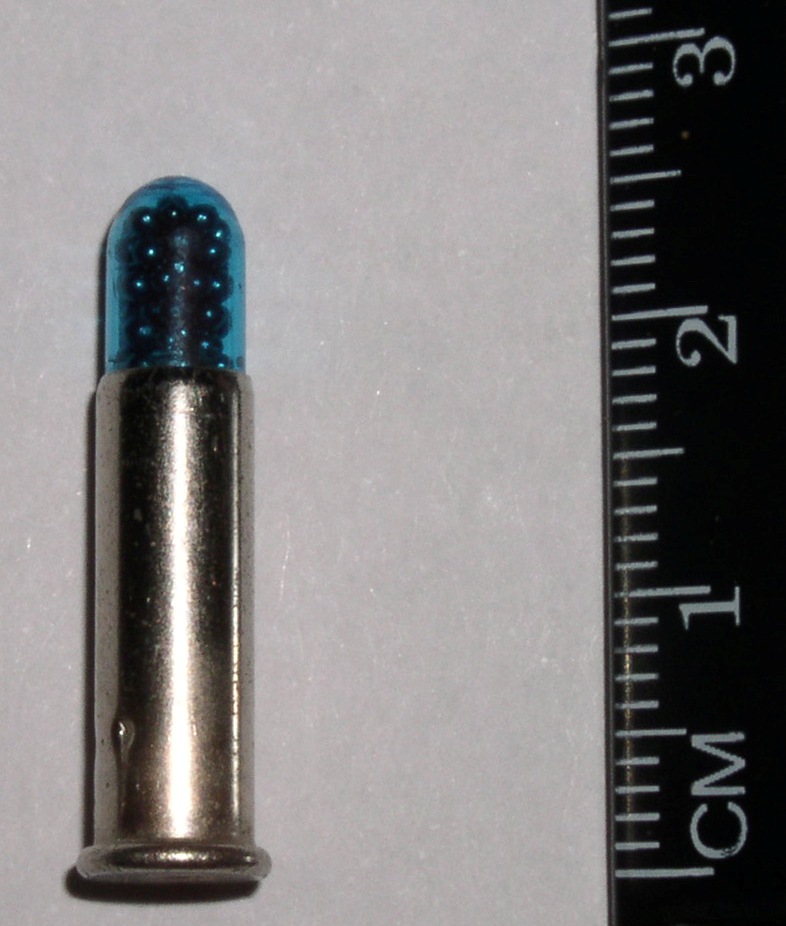
ZAUF: Types of Firearms
Now that there’s enough information to know how to read and have a basic understanding of caliber, let us move on to the firearms themselves. On the whole, firearms are split between handguns and long guns. The names themselves are fairly self-explanatory; handguns are designed to be fired in one or both hands and are generally much smaller and shorter than long arms. On the other hand, long arms are designed to be held in both hands and braced against the shoulder when fired.
Now for something slightly more technical - handguns are subdivided into two different categories: pistols and revolvers. The term ‘pistol’ implies that the chamber is integral with the barrel, meaning the term covers most modern semiautomatic handguns. Revolvers in contrast have a revolving cylinder (hence the name) which contains multiple chambers and at least one barrel for firing them. While there are other odd firearms that have been made throughout history such as revolvers with multiple barrels and multiple cylinders, they are almost completely irrelevant in a modern discussion.
The major split of long guns in the parlance of small arms (because this series won’t be talking about artillery) is between rifles and shotguns. Rifles are defined by as well as named after their rifling: lands and grooves on the inside of the barrel which impart a spin onto the bullet as it travels through. This spin (much like on an American football) gives the bullet increased stability in flight, granting an increased effective range.
Shotguns are defined by two things: the ability to fire shot shells and their smooth bore. Unlike rifles, the bore of a shotgun is generally unrifled. This is because the behavior of shot shells is unlike that of other single bullet cartridges, and rifling would have no effect on these projectiles. Shotguns have what is called a choke (either fixed into the end of the barrel or swappable) that controls the spread of the pellets as they leave the barrel.
As always, there are exceptions and combinations to these general definitions. For example, some shotguns have a revolving mechanism to hold shot shells and are technically a revolver shotgun. There are also smaller subcategories and middling firearms classified in such categories as carbines or submachine guns which are even more refined divisions of the above general categories.
ZAUF: Clips, Magazines, and You
Following the common theme of ammunition, let’s take a look at how they’re loaded into a firearm. In the early days of single shot cannons and later on hand cannons and muskets, the process was excruciating: a shooter would have to load powder in through the muzzle (the business end), tamp it down, shove a wad and bullet in the gun and tamp that down, and then use a separate trigger activated fuse to fire. Thankfully, the invention of the fully encased metal cartridges we know and love has solved all of those problems and made possible for weapons to be magazine fed.
What is a magazine? It is a container where cartridges rest before being cycled into use. A magazine can be internal or removable. An internal magazine is fixed within the firearm itself, and cartridges are added by hand or with the help of a piece of metal called a clip. We’ll talk more about clips later, but the important point is that they are not magazines. Generally, removable magazines come in a few flavors, the most common of these is the box magazine. All that means is that it is boxy and rectangular. Other types of magazines include things such as helical drums that are significantly more common on shotguns and high capacity magazines.
There are generally two types of magazines that are in common use today: Single Stack and Double Stack. What does that mean? Within the body of the magazine the cartridges rest on top of each other in either a straight line or a staggered column. The straight line resting method is called a single stack for obvious reasons, and the staggered column is the double stack. The latter method allows more cartridges to fit into a magazine because of the staggered design.
ZAUF: Introduction to Caliber
The next part of our Zen and the Art of Understanding Firearms (ZAUF) series is still part of the introduction. This entry in the series will teach you what it means when people say “.45 Caliber”, “9 millimeter”, or “12 gauge”.
With these designators, it comes down to differences between the region of origin: American vs the rest of the world. When someone says “a 45” or “45 caliber”, what do they mean? 45 of what? 0.45 of an inch, of course. So what does that mean exactly? The width at the widest part of the given bullet is approximately .45 of an inch wide in diameter. We say “approximately” because if you wanted to extend significant figures out to the thousandths place and beyond you’ll quickly realize that the measurements aren’t quite what you’d expect. In the case of .45, some 45 caliber bullets are commonly .451 inches and others are .452. Common calibers that you’ll see referred to this way are .22, .357, .45, .44, and .50. What you may also see are calibers such as .30-06 (pronounced “thirty aught six” in this case), wherein there is a hyphen followed by another number. These hyphenated numbers are completely arbitrary and their meanings range anywhere from total powder charge meant for use with the cartridge or even the year the cartridge was adopted.
In a metric world with international standards, bullets are measured using millimeters, such as 7.62x51mm and 5.56x45mm, or 7.62x39mm. What do these two numbers mean? The first number is the same as the American method of reference, meaning the width of the bullet at the widest point. The second number is the length of the casing.
So what is a gauge? Most commonly you’ll see gauge used in reference to shotshell measurements for shotguns. The real definition of what a gauge is is tangentially related to a similar density measurement of iron ball fitting in cannons that ends up being fairly obscure and technical, so we’ll spare you that aspect of it. What you do need to know and keep in mind is that usually the smaller the number, the bigger the shell, E.g. 10 gauge > 12 gauge > 20 gauge. The notable exception to this is .410 shotshell, which is measured in the American style of caliber mentioned above.
Sometimes there are cartridges that are very similar, or are slightly modified versions of each other that are designed for shooting at different pressures and will have both types of designations. Two common examples of this are .223 Remington and 5.56x45mm as well as .308 Winchester and 7.62x51mm. These two sets of cartridges are almost identical, and depending on the firearm, they will have cross compatibility. However, there are nuances I’m glossing over right now that will be explored later, so keep in mind that while they’re often interchangeable, that’s not always the case.
Zen and the Art of Understanding Firearms
There’s a Zen koan that goes,
“Nan-in, a Japanese master during the Meiji era (1868-1912), received a university professor who came to inquire about Zen.
Nan-in served tea. He poured his visitor's cup full, and then kept on pouring.
The professor watched the overflow until he no longer could restrain himself. ‘It is overfull. No more will go in!’
‘Like this cup,’ Nan-in said, ‘you are full of your own opinions and speculations. How can I show you Zen unless you first empty your cup?’”
That serves as the foundation of any introduction to Zen and Zen Buddhist philosophy. While I won’t be attempting to teach you Zen here, I do recognize the fact that for many people, starting with tabula rasa is the best way to begin any form of education: free of preconceptions and prejudice.
That in mind, let’s begin this partnered meditation on firearms. What I hope to present to you, the reader, is a guide that contains all of the building blocks to understand, operate, and master firearms in general.
So beginning with nothing, the first topic that’d be best to cover is ammunition. What do guns shoot? The correct answer is bullets, but that’s a bit of a misnomer. What you’re most likely to find on sale in stores are technically cartridges. These cartridges are collections that involve a bullet, gunpowder, and a small explosive charge called a primer all wrapped up in a metal casing. These bullets can come in a variety of forms and names, but that’s for a later discussion. Similarly not all gunpowder is created equal. Nor are the primers the same across the multitude of different cartridges. To save time, though, the metal casing only really comes in a handful of different metal types.
The most common of these in modern production is brass. You’ll find brass casings commonly in modern production ammo and it is the de facto standard of modern ammunition. The second most common of these is steel. Steel cases tend to be a sign of Soviet and post-Soviet surplus ammunition, which has its own multitude of quirks that we can discuss later. Other less common and more brand-defined metals are aluminum and a much broader and more vague term called bi-metal which, as the name implies, consists of two different metals. A special note is given to shotgun shells, which are most commonly made with plastics these days, though there are ones made of solid brass.
So what happens to this whole cartridge in the process of actually shooting a gun? Once the trigger is pulled on any given firearm, something strikes the primer, which is a contact explosive. This primer ignites and causes the powder within the metal casing to burn. The burning of the powder creates gas and pressure, which pushes the bullet out of the top of the metal casing and out the barrel.
Simple, isn’t it?




